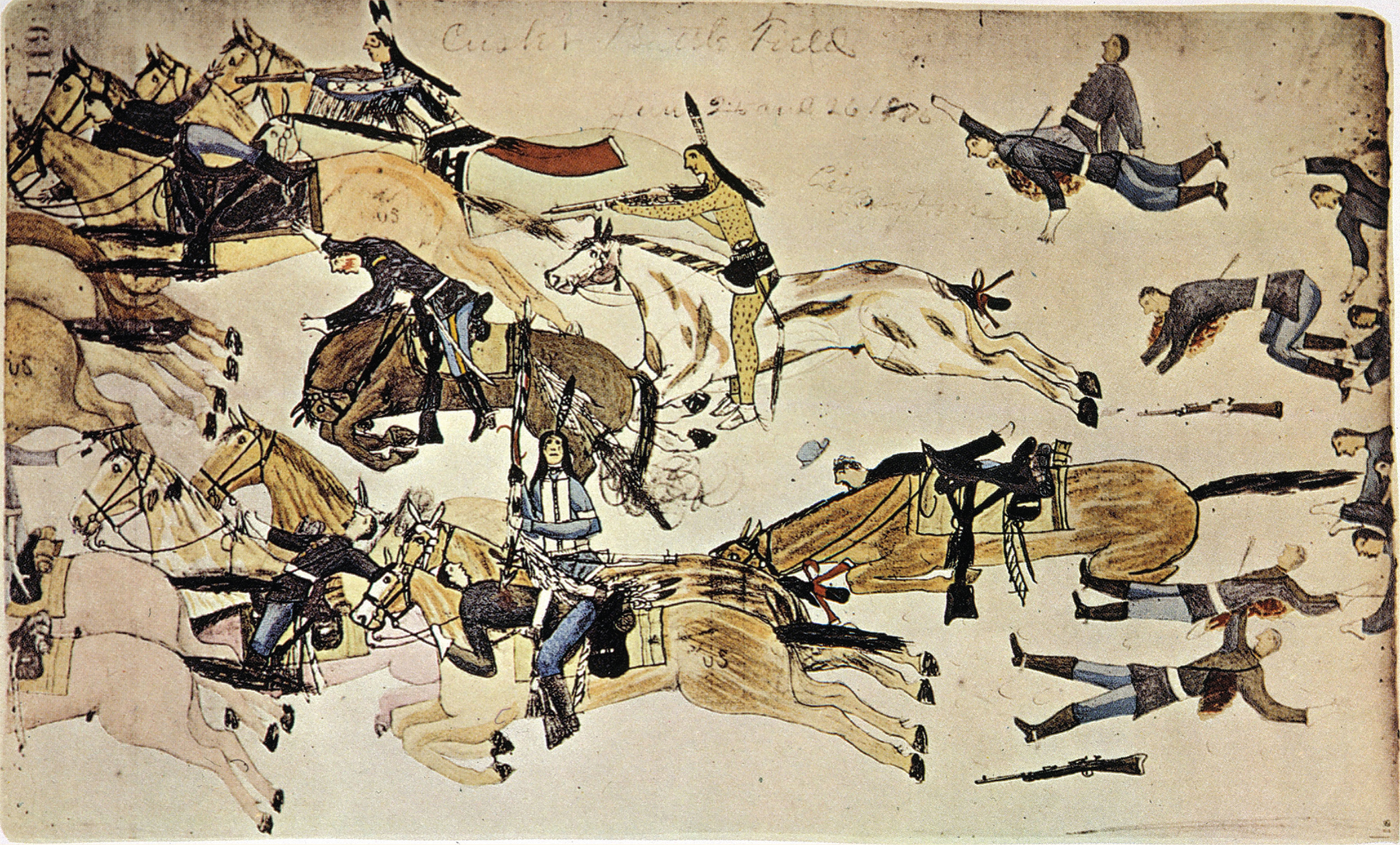The American Promise:
Printed Page 472
VISUALIZING HISTORY
“Custer’s Last Stand”


No American soldier survived the Battle of the Little Big Horn. Yet many Indians remembered the battle and left pictures of it. In this pictograph, Amos Bad Heart Bull, an Oglala Sioux from the Pine Ridge Reservation, dramatized the battle at the river the Indians called the Greasy Grass. Although the artist was only seven years old in 1876 when the battle occurred, he based his pictures on the recollections of his uncle and other Oglala elders. Crazy Horse ritually prepared for battle by painting hailstones on his body, wearing a small stone tied behind one ear, and placing a single eagle feather in his hair. Featured at the center of the pictograph, he can be identified by his unique war paint. According to one Arapaho warrior who fought beside him, Crazy Horse “was the bravest man he ever saw.”
Even at the time the Indian and white participants interpreted events differently. One of the soldiers cut off from Custer’s group feared for his life as he heard “wild victory dances” coming from the Lakota camp. But what he heard, according to a Cheyenne warrior named Wooden Leg, were the songs of the Lakota and Cheyenne, mourning their sons, husbands, and fathers. The soldier, who huddled on Reno hill praying to live through the night, would not only survive, but live to 1950, making him the last American to survive “Custer’s Last Stand.”
Many of the battle depictions by whites were little more than romantic idealism, with Custer on horseback leading a valiant charge. In this 1889 lithograph of the battle, Custer and his men are shown dismounted, firing at Indians on horseback. A much more accurate portrayal than many of the others in circulation at the time, the lithograph shows how badly Custer was outnumbered when he divided his forces and led one contingent into the largest gathering of Indians ever to meet on the Plains.
SOURCE: Crazy Horse: The Granger Collection, New York; battle: Private Collection/The Bridgeman Art Library.
Questions for Analysis
- Compare the two portrayals. What strikes you about the Indian version in relationship to the Anglo lithograph?
- Who is the center of the focus for the Indian? Who for the Anglos?
- Would you know the outcome of the battle by looking at either picture? Why?
Connect to the Big Idea
In what ways does the comparison of the two depictions of the Battle of the Little Big Horn point to conflicting interpretations of the American West?